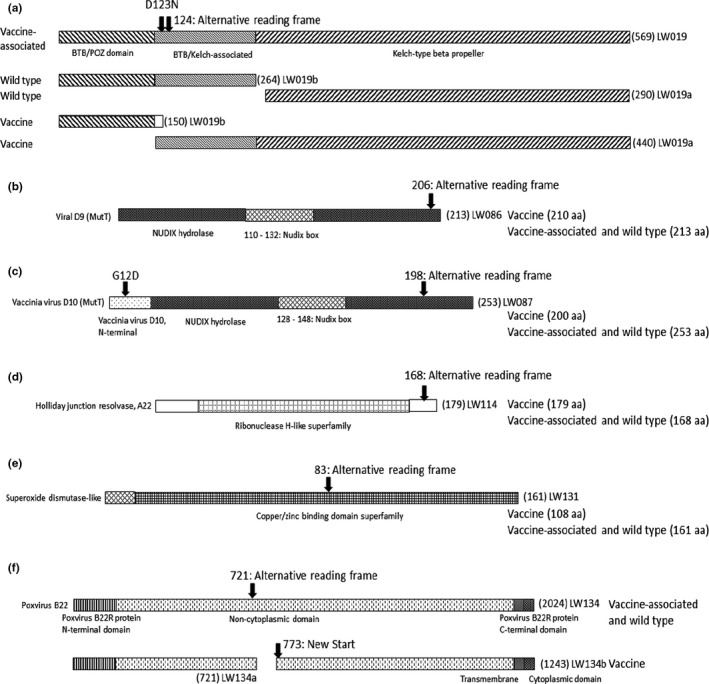Figure 2.

Graphical representation of six LSDV ORFs and their predicted domains using InterProScan predictions based on VACV protein names and functionality, where known. The influence of each SNP on the reading frames of either vaccine, vaccine‐associated or wild‐type LSDVs is indicated. (a) ORF LW019. A complete 569 aa ORF is observed in the vaccine‐associated strains, compared to the two individual ORFs (LW019a and LW019b) predicted for either the wild‐type (AF409137_Neethling‐LDS‐Warmbaths‐RSA‐2000) or vaccine (KX764645_Neethling‐LSD‐Vaccine‐OBP) strains. (b) ORF LW086. This ORF within the vaccine‐associated and virulent wild‐type viruses is predicted to code for a 213 aa protein, compared to a 210 aa truncated protein in the vaccine strain. (c) ORF LW087. Similar to LW086, the vaccine‐associated and virulent wild‐type ORFs are predicted to produce a 253 aa protein and the vaccine virus strain a truncated 200 aa protein. In addition, both the vaccine‐associated and wild‐type viruses have a D at position 12 in the N‐terminal domain, compared to the G of the vaccine virus. (d) ORF LW114. The vaccine virus predictably encodes a longer 179 aa protein, while both the vaccine‐associated and wild‐type viruses encode truncated 168 aa proteins. (e) ORF LW131. The vaccine‐associated and wild‐type viruses are predicted to code for a complete 161 aa superoxide dismutase‐like protein, whereas for the vaccine viruses a termination signal leads to a shorter 108 amino acid protein. (f) ORF LW134. The wild‐type virus is predicted to produce a complete 2025 aa protein, while the vaccine‐associated viruses produced a 2024 aa protein, due to a deletion of the asparagine (N) at position 2020 (N2020del). By contrast, the vaccine virus should produce two proteins of 721 and 1,243 amino acids
